fall inside a hole
R-15 Double Track Point Rail
| <-- R-14 Crossing Point Rail | R-16 Automatic Point Rail --> |
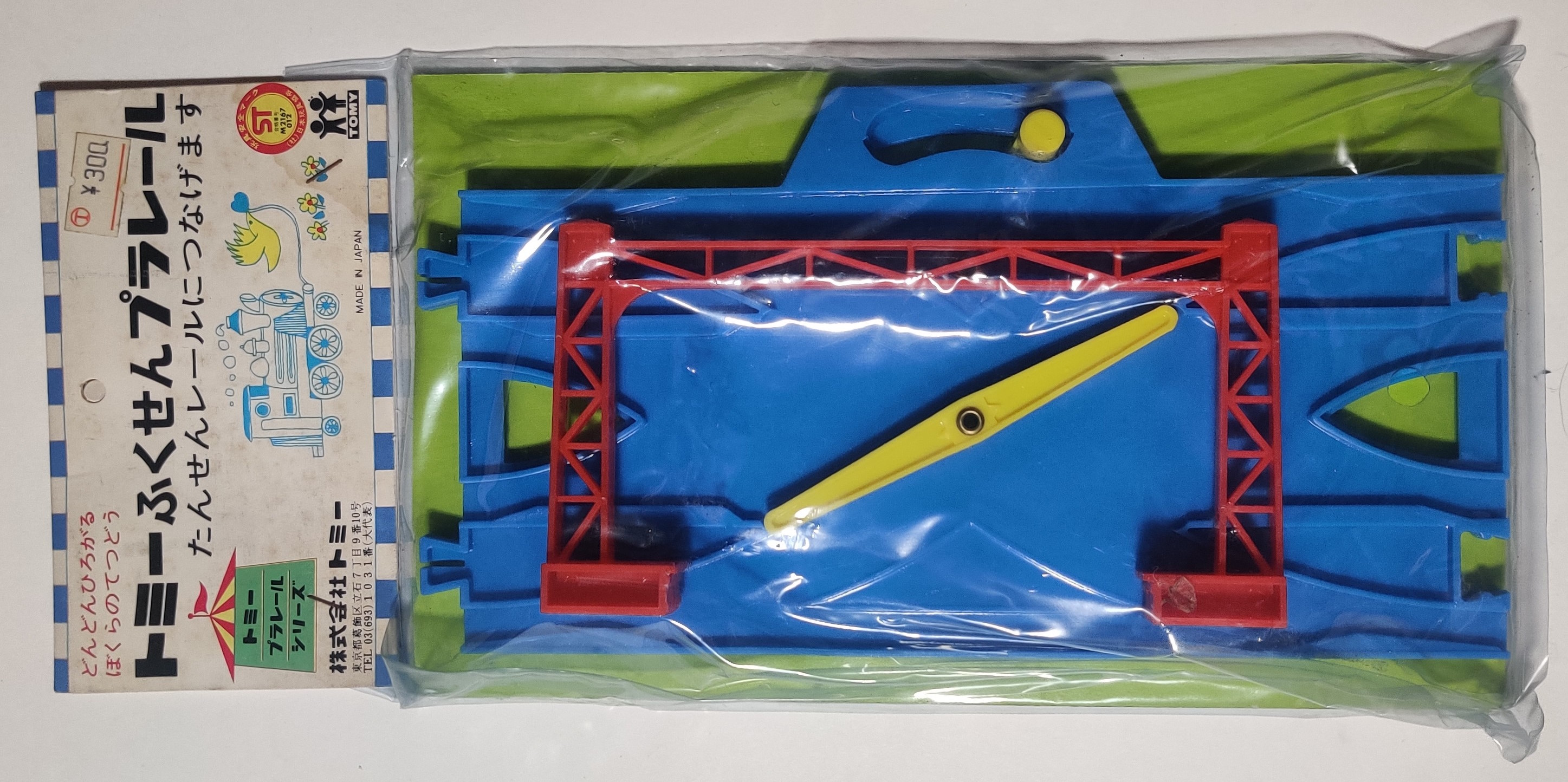
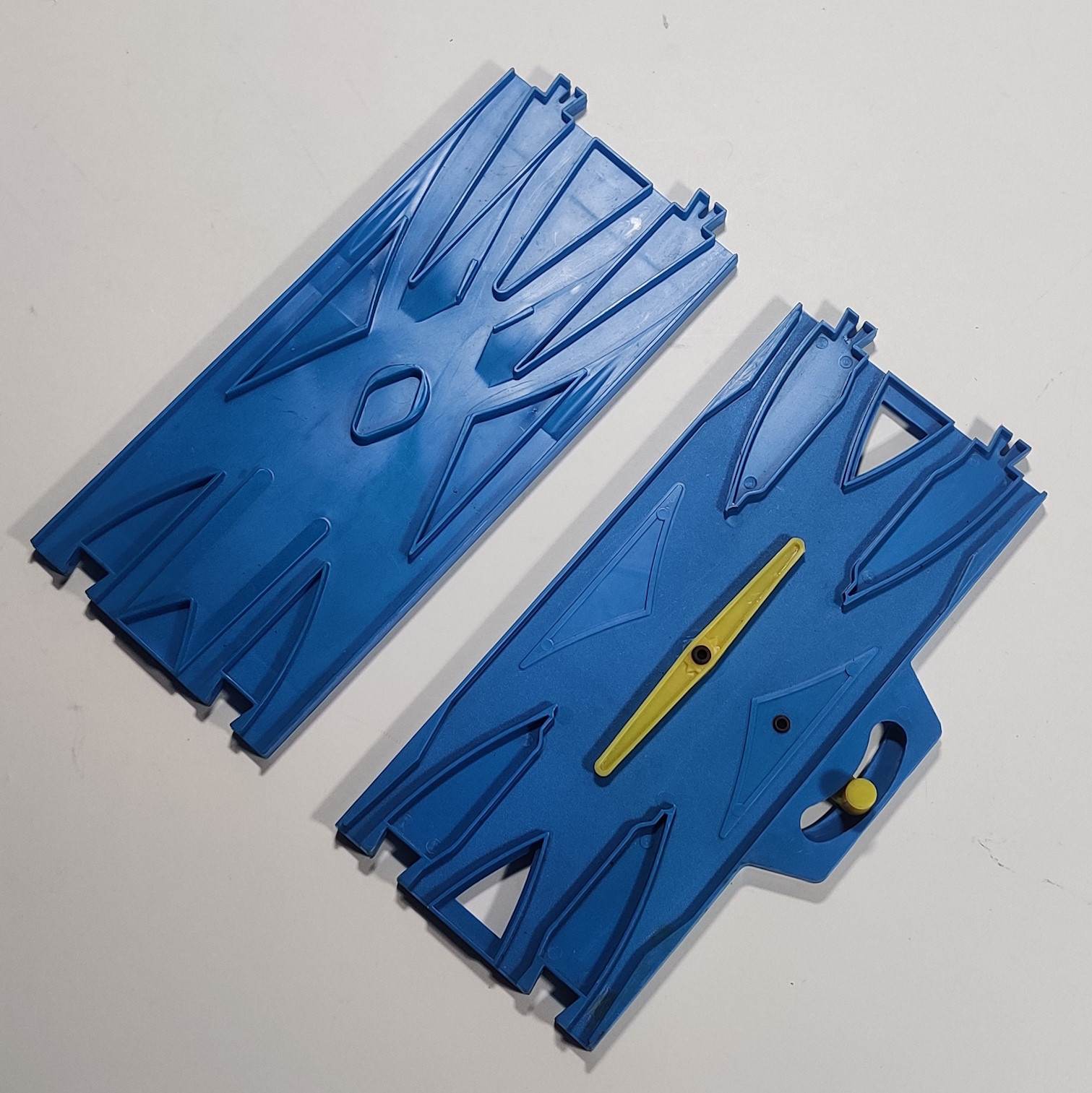
The Double Track Point Rail was first released individually around 1968 as part of the early Fukusen Plarail line with a double track overhead catenary. It has a yellow lever that interconnects with a yellow track divider in the middle of the rail that allows you to send a train straight through or switch it to the other double rail line. The "Automatic" Double Track Point Rail was first used in the Round-Trip Plarail 3D Loading and Unloading Set in 1975 and later the Subway Train Set in 1976. A train that enters the switch from the concave connector side will go straight across while a train entering from the convex side will be automatically swapped over to the other track. Beginning in 1978 the two double track point rails have been packaged together.
Point Rail/Fukusen Point Rail (1968-1977)
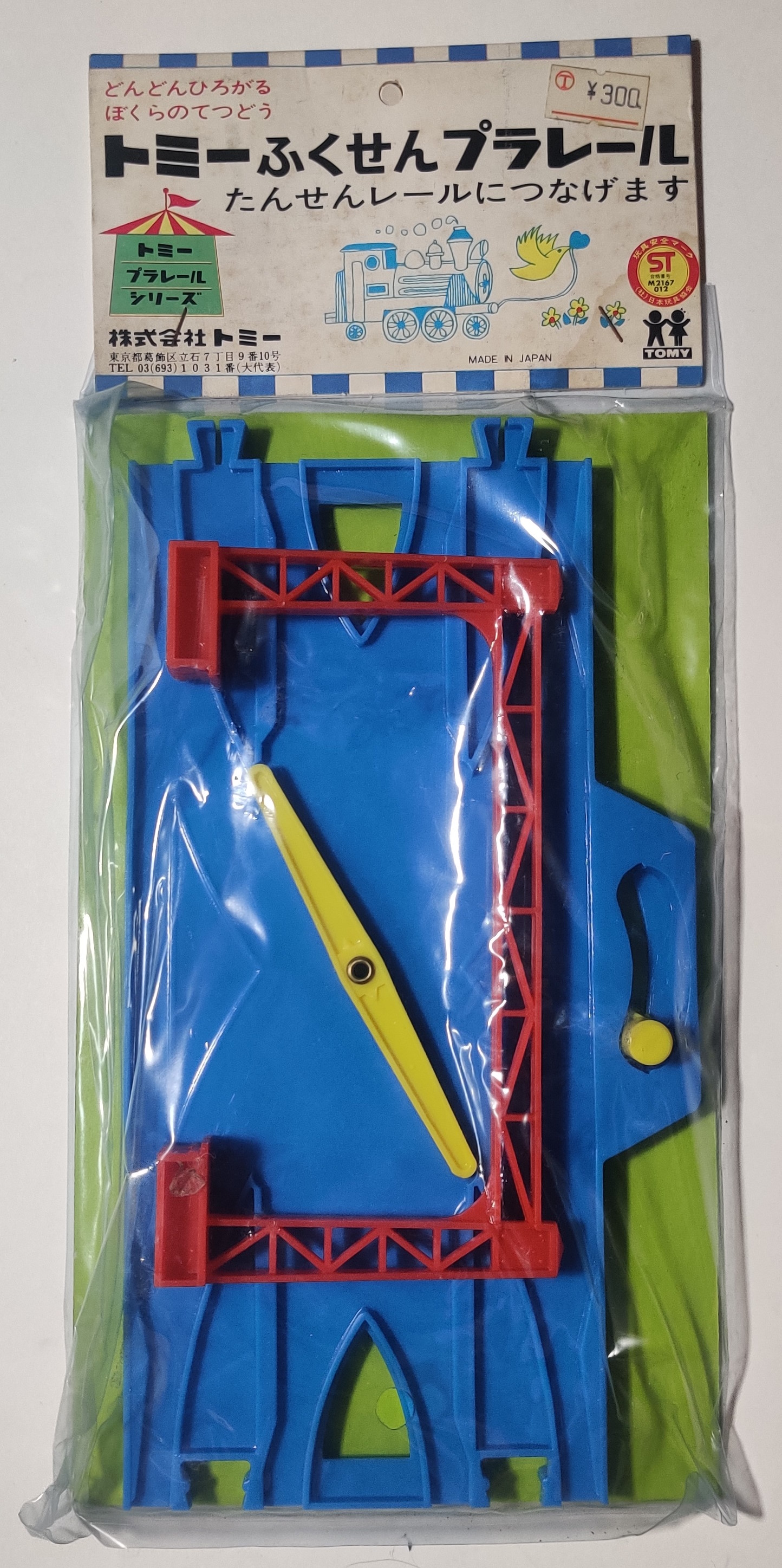
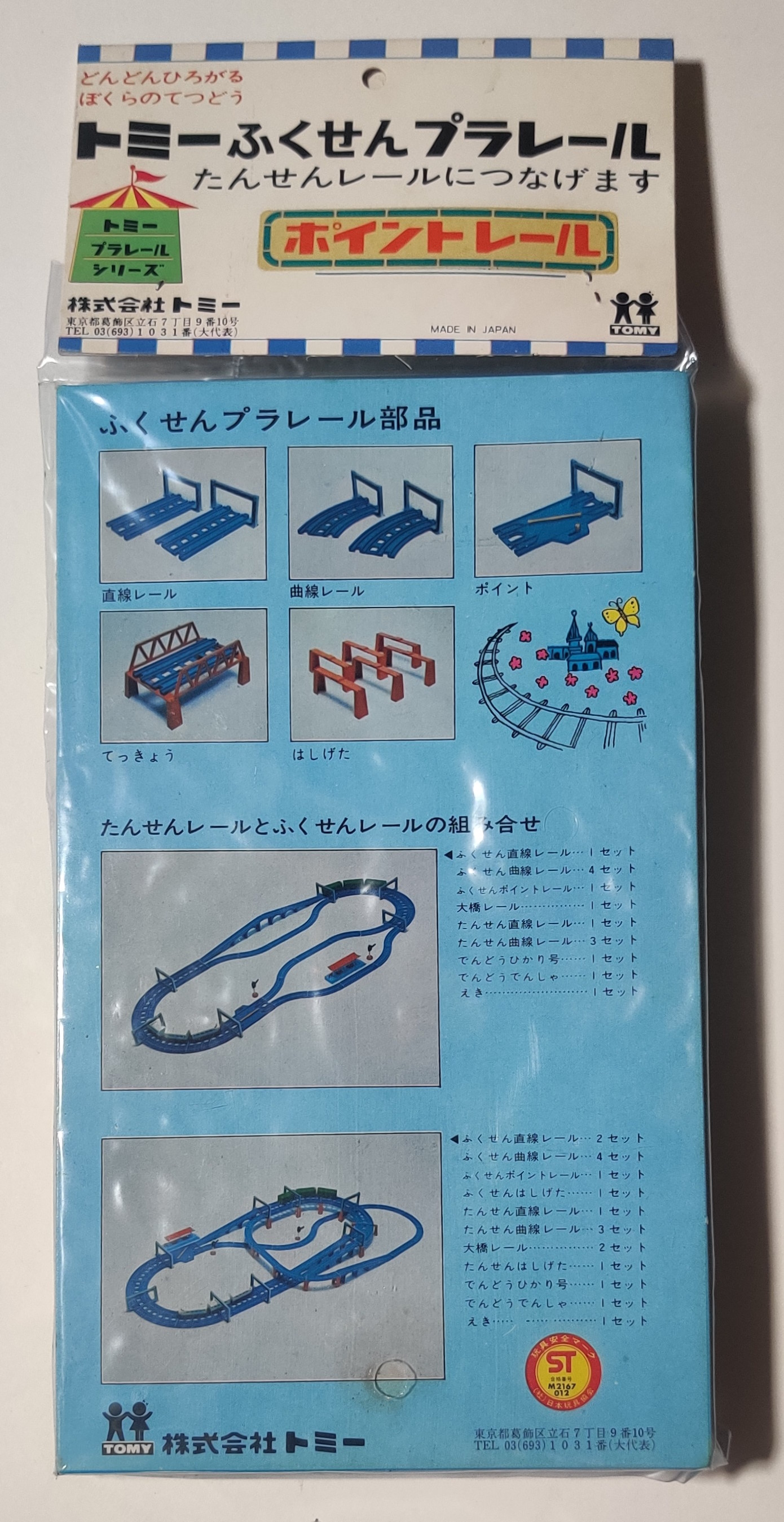
The "lever type" double track point rail was first released with the initial Fukusen or Double Rail Plarail accessories in 1968 as ポイントレール or "point rail" with a single double track overhead catenary. This early example has a smooth rail surface.
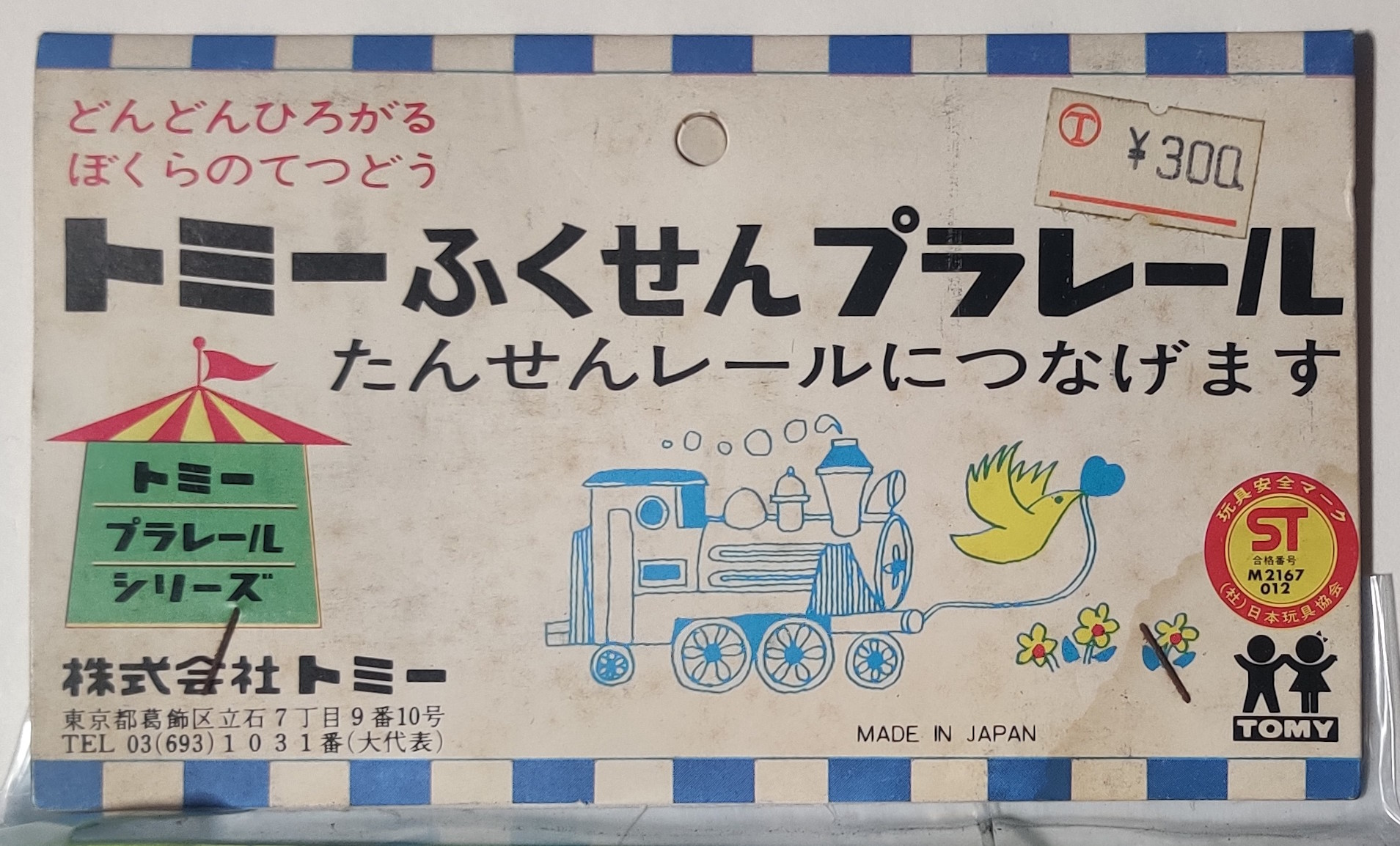
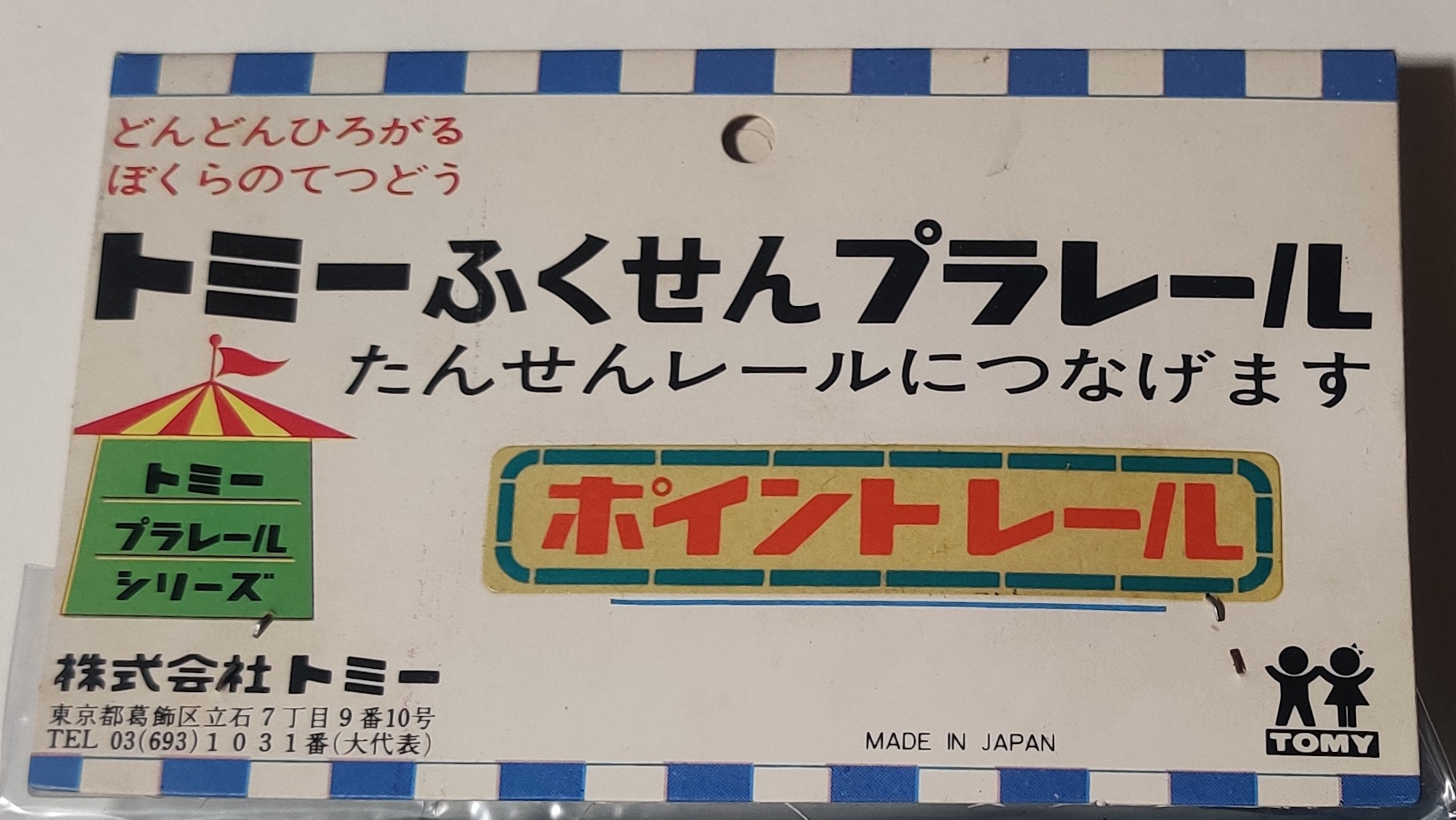
The tag on my bagged example has been put on backwards, with the side of the tag with the sticker of the name of the product showing on the back of the bag and the usual rear with a cartoon steam locomotive on the front. This tag has a printed ST mark that dates it to 1972, towards the start of the ST toy safety mark's introduction.
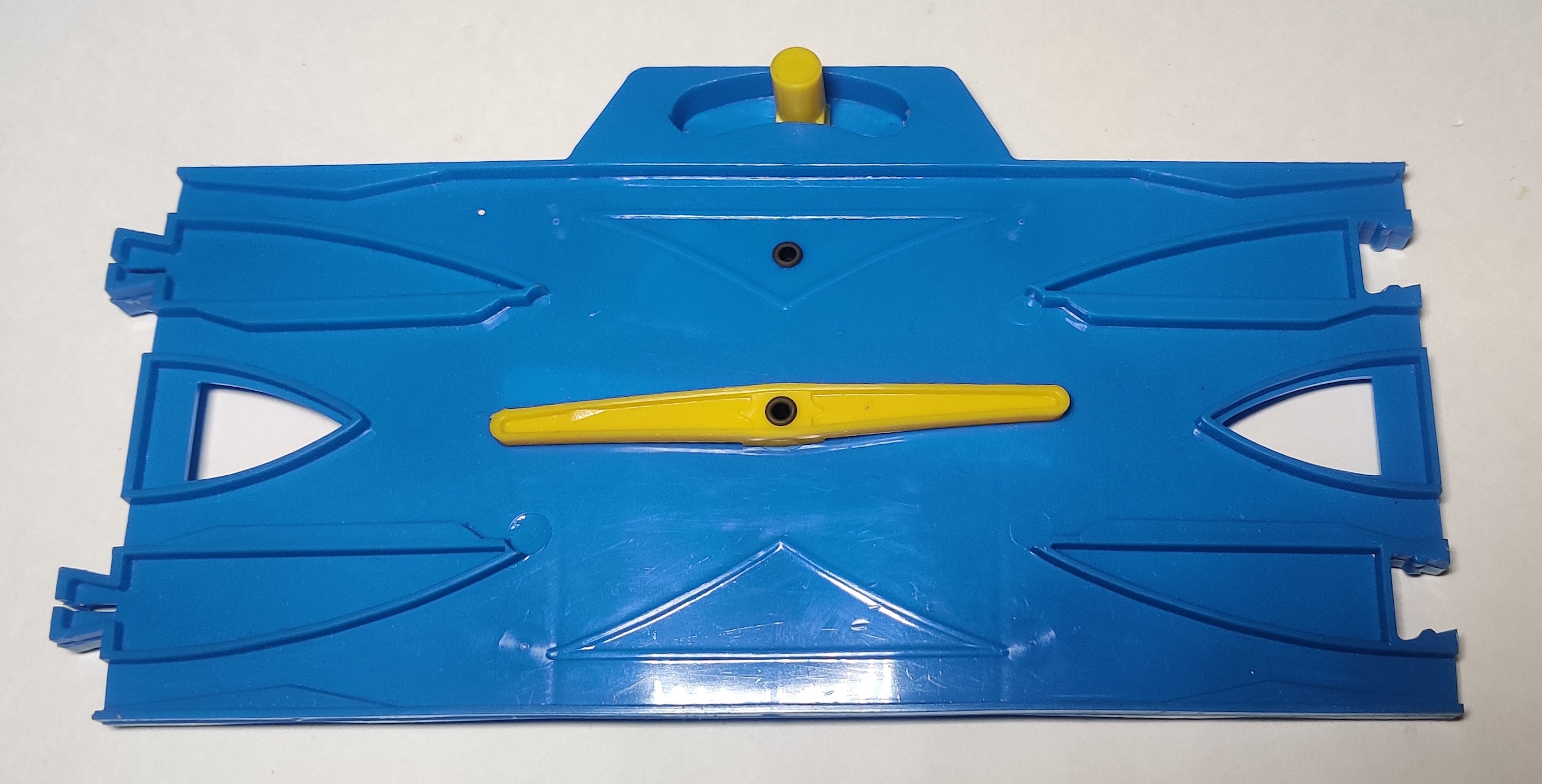
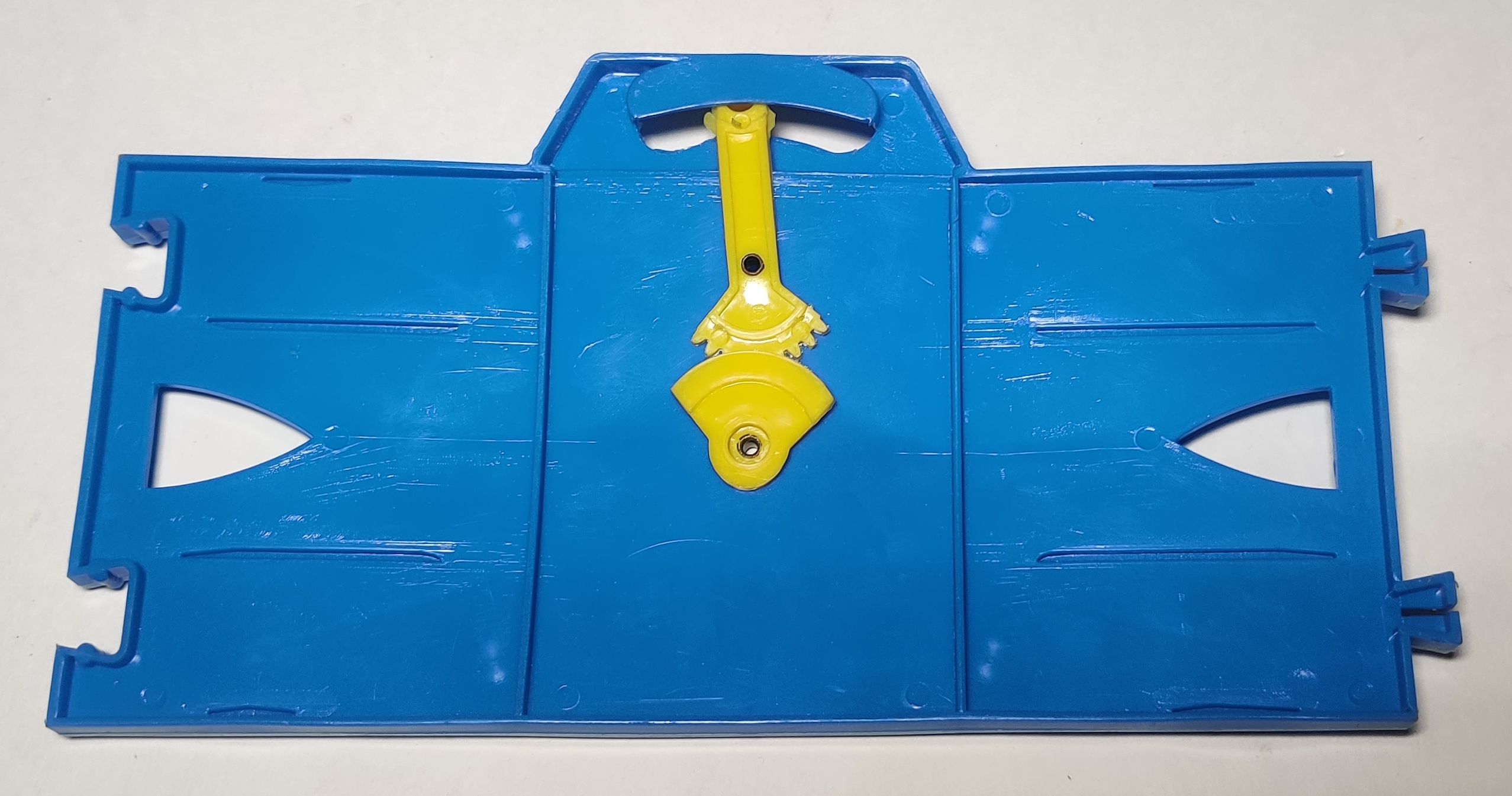
When the point rail was rereleased in the 1970s with updated tags that were not a part of a specific fukusen accessory series it was renamed the Fukusen Point Rail or Double Track Point Rail to differentiate it from other point rails in the range. I also believe the lever-type would have gained a roughtop surface during the mid 1970s.
This switch predates several more common point rail designs like the R-11 Turnout Rail.
Automatic Point Rail (1975)
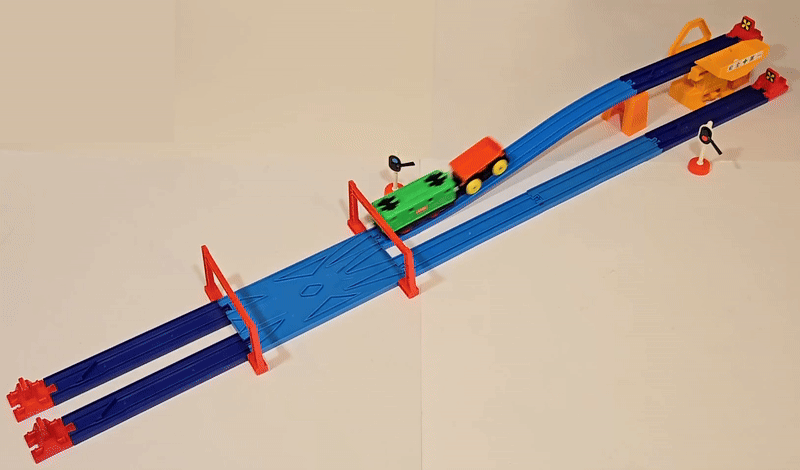
The "automatic" point rail was first used in a Round-Trip Plarail set with a "shuttle train" gimmick. Like the classic Tomiyama Shuttle Train, the Round Trip Plarail Three-Dimensional Loading and Unloading Set used a reciprocating locomotive and this "trick" set of points to send a train out a different way than it arrived to load and then unload a tipping wagon.
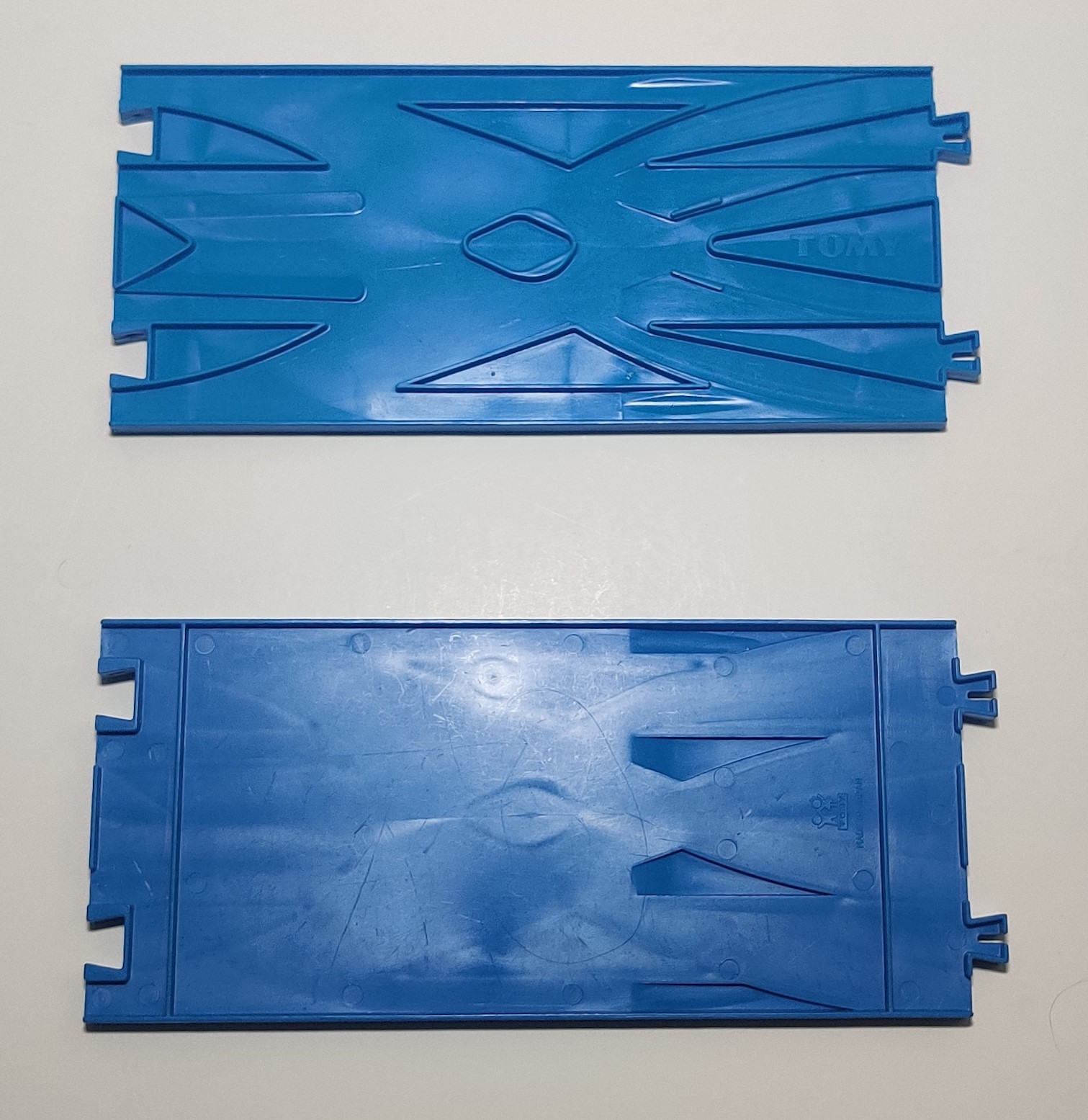

In 1978 a revised molding of the original 1975 set item began to be included with the double track point rail. At the time this was referred to as the "Automatic Point Rail" (自動ポイントレール) but this was changed to avoid confusion with the other automatic point rail. This is sometimes called the "non-lever type."
Double Track Point Rail (1978-1987)/R-15 Double Track Point Rail (1988-2012)
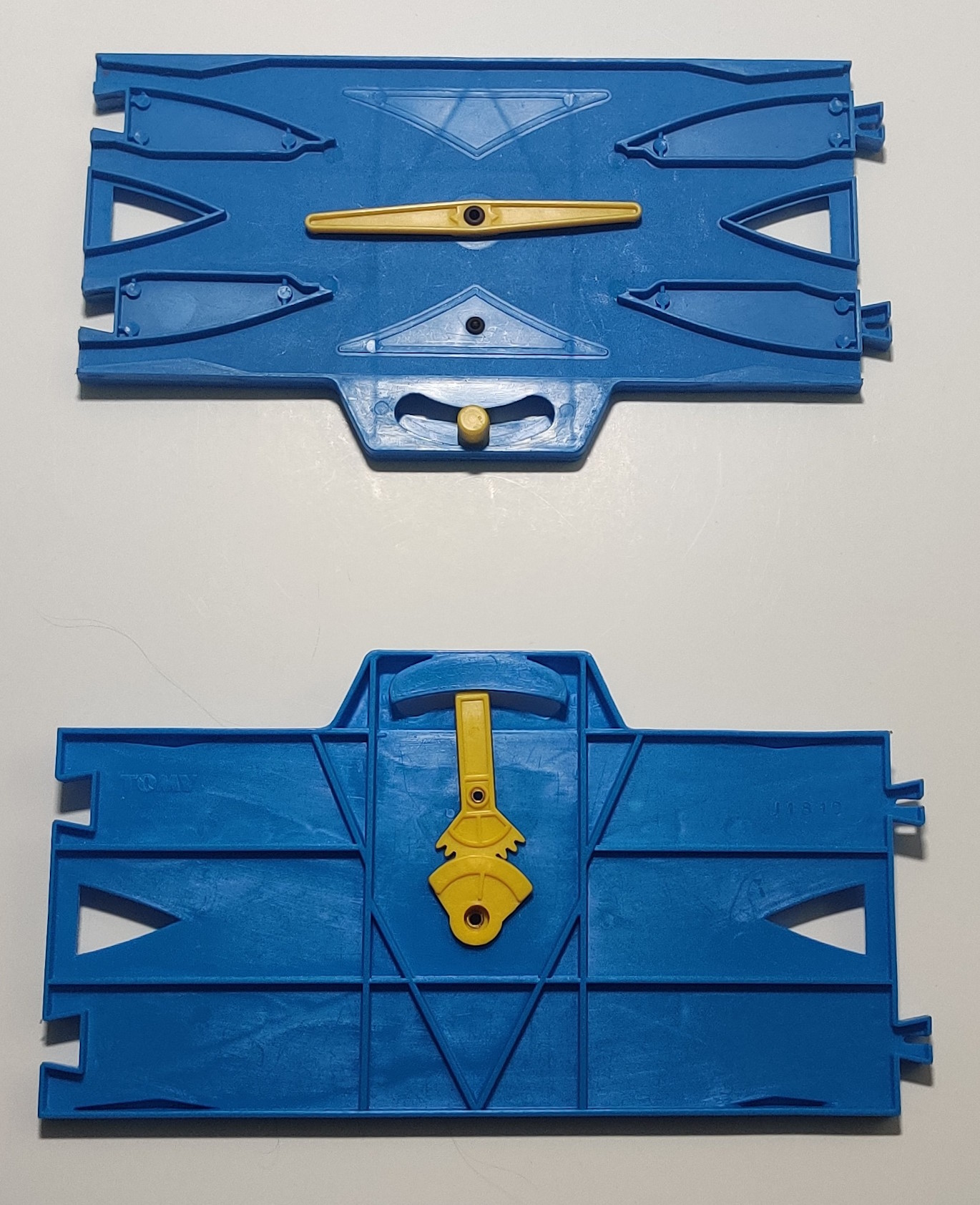
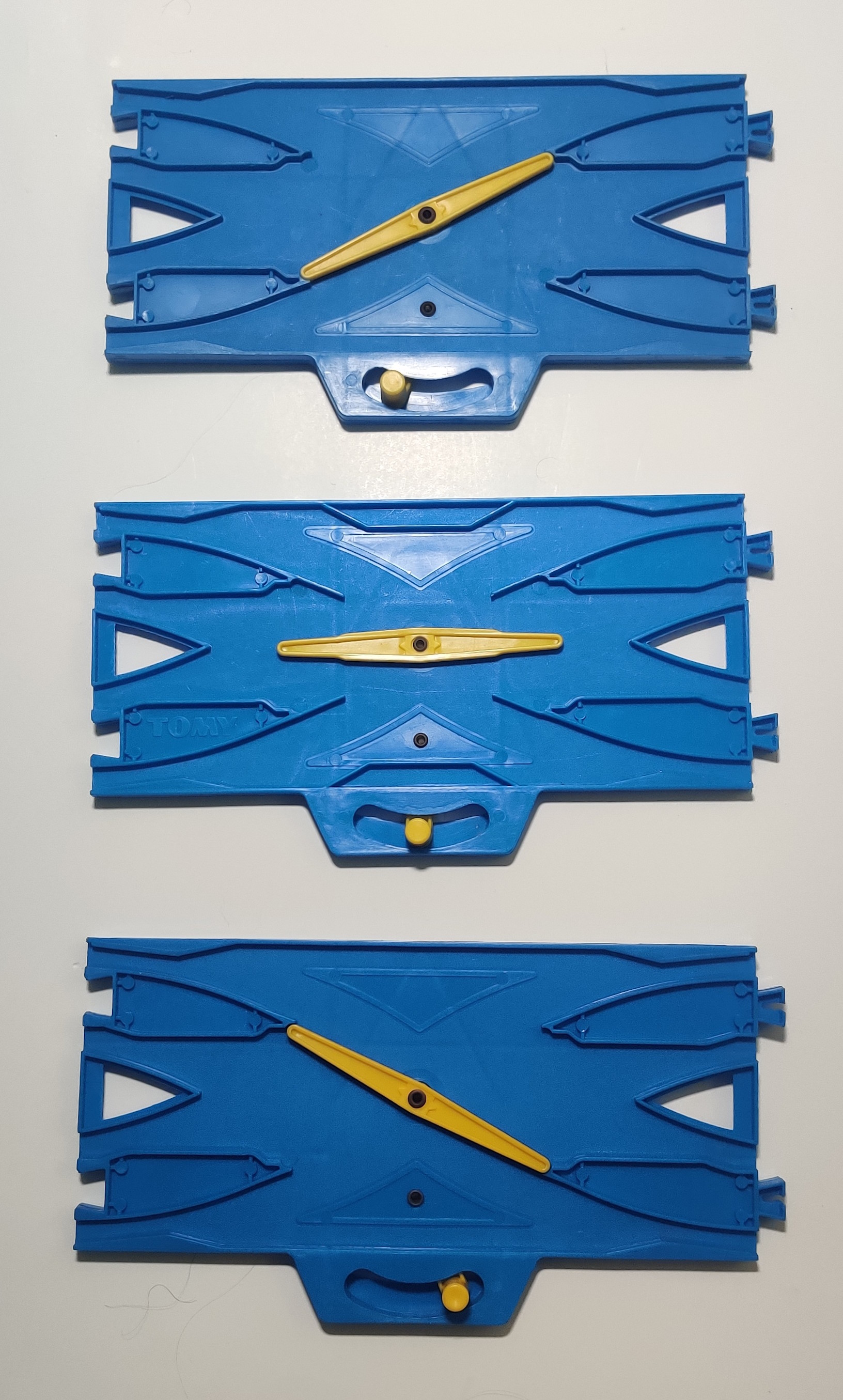
Under the track bed the lever is geared into the direction changer. If the lever is set to the left, trains heading in on the closer concave rail will be sent out on the further rail, and trains entering from the far convex connector will be switched across to the inner line. When the lever is to the right, trains entering from the close outboard line will be switched to the far concave line and visa versa. In the middle trains on either line will continue on straight through. This allows one to swap which rail a train is on regardless of which line it starts on or what direction it is heading.

Click for longer video with sound
The stiffness and ability for the switch to stay set varies from switch to switch. Trains that enter a double track point rail set against them* may push the direction changer out of their way and continue on, but this often leaves the changer in an ambiguous position that may or may not switch the next train through. Additionally, trains will sometimes ride up on the yellow changer and derail. Stiffer switches are less likely to be bumped out of place, but are also therefore more likely to derail a train that hits the point set against it*. Very loose switches can sometimes drift away from their set position when a train hits the direction changer during normal switching operation.

*When a set of points is "set against" a train that means it is entering the point from the spur that the entrance of the switch is not currently pointing to, I.E. if a train were to enter the switch from the single-track side it would be sent to the opposite output from the train that the point is set against. In most toy systems, the train will simply push the direction-deciding component of the switch out of its way so it can pass, but on some toy tracks as well as real railways where switches are large, mechanical, and mostly heavy metal the moving direction-changing rails will resist being shifted and can cause a derailment.
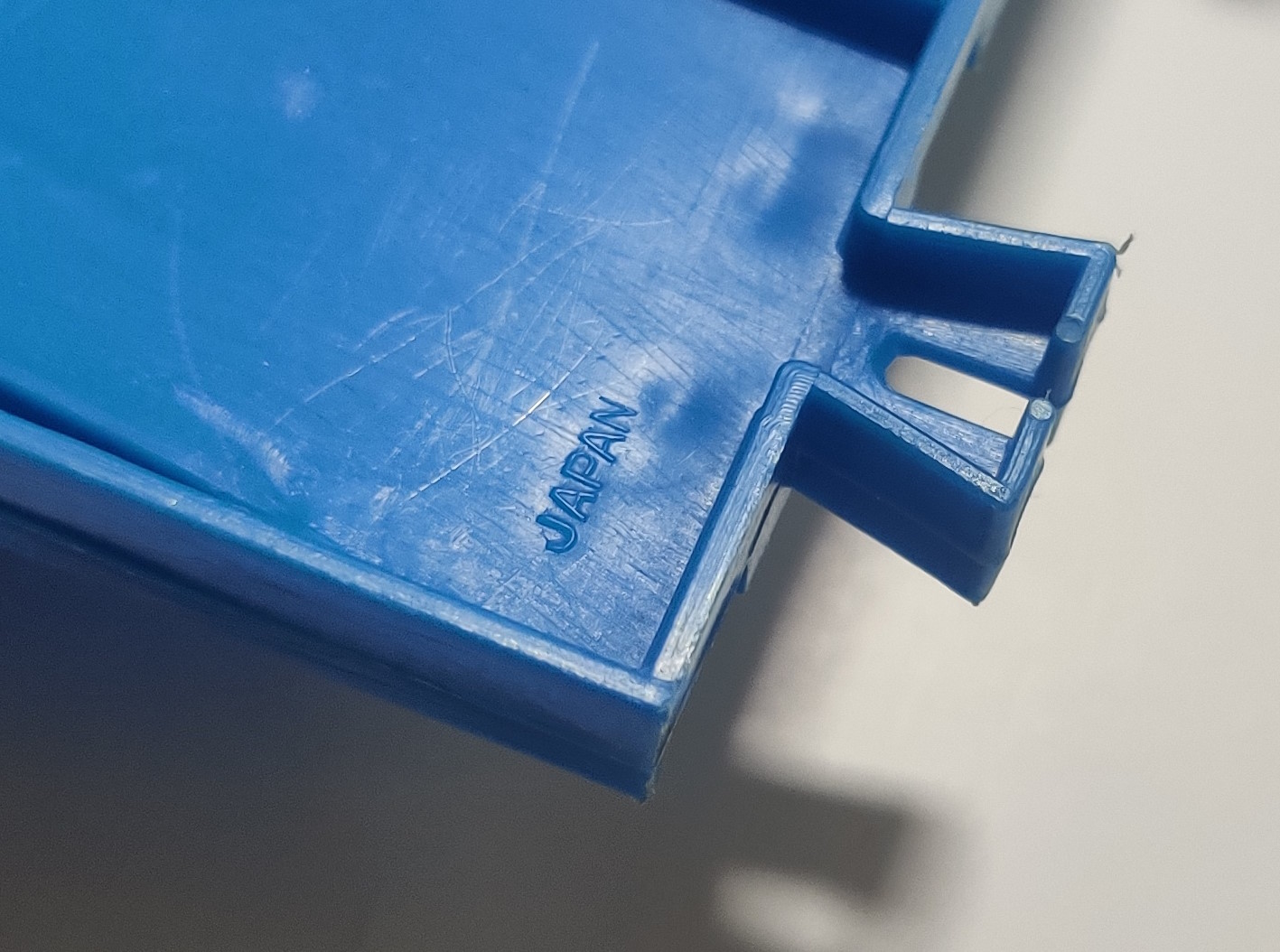
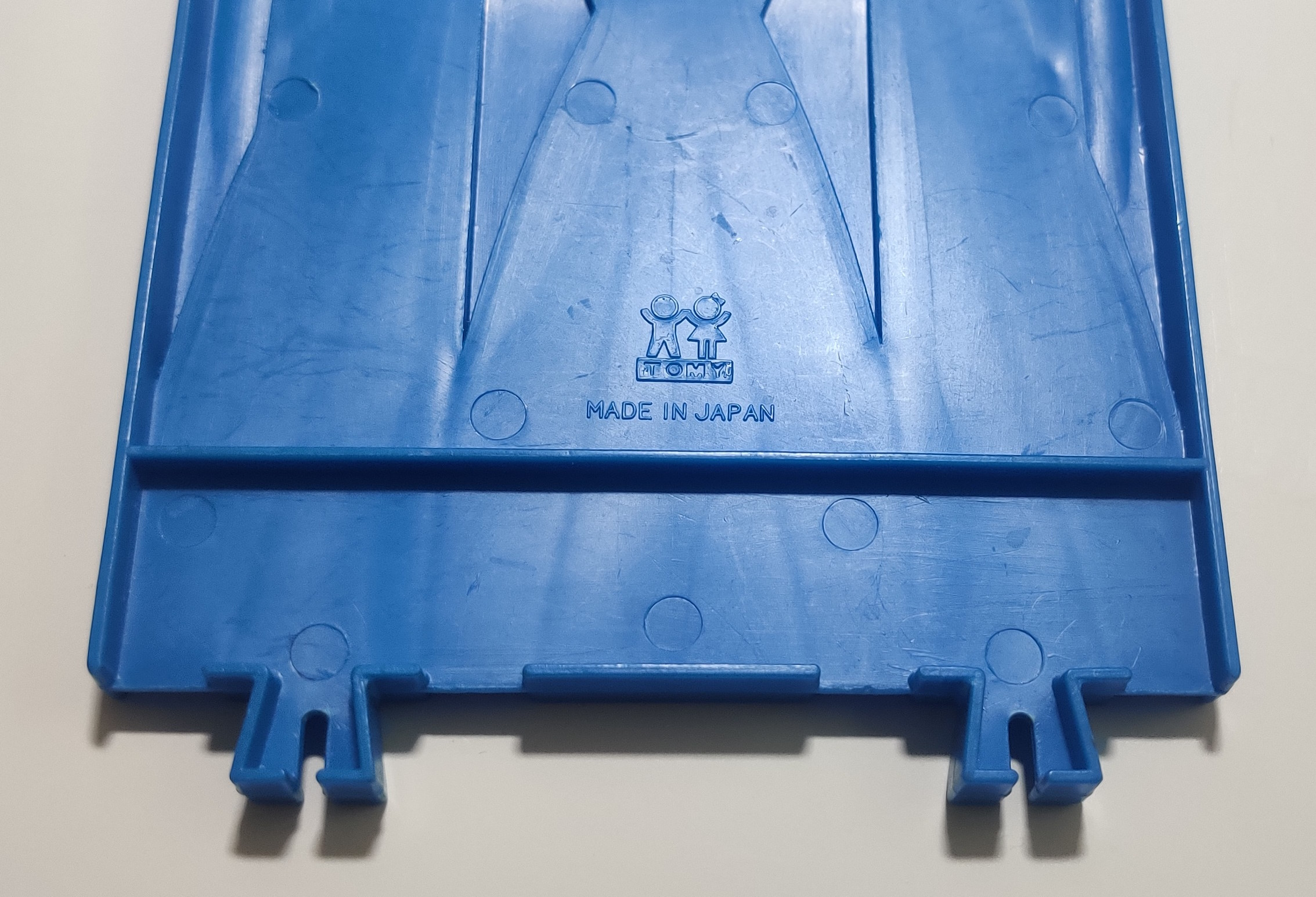
Later Japanese-production lever-type rails have a small Japan mark near one of the outboard connectors. The automatic type have the Tomy boy and girl logo and made in Japan text.
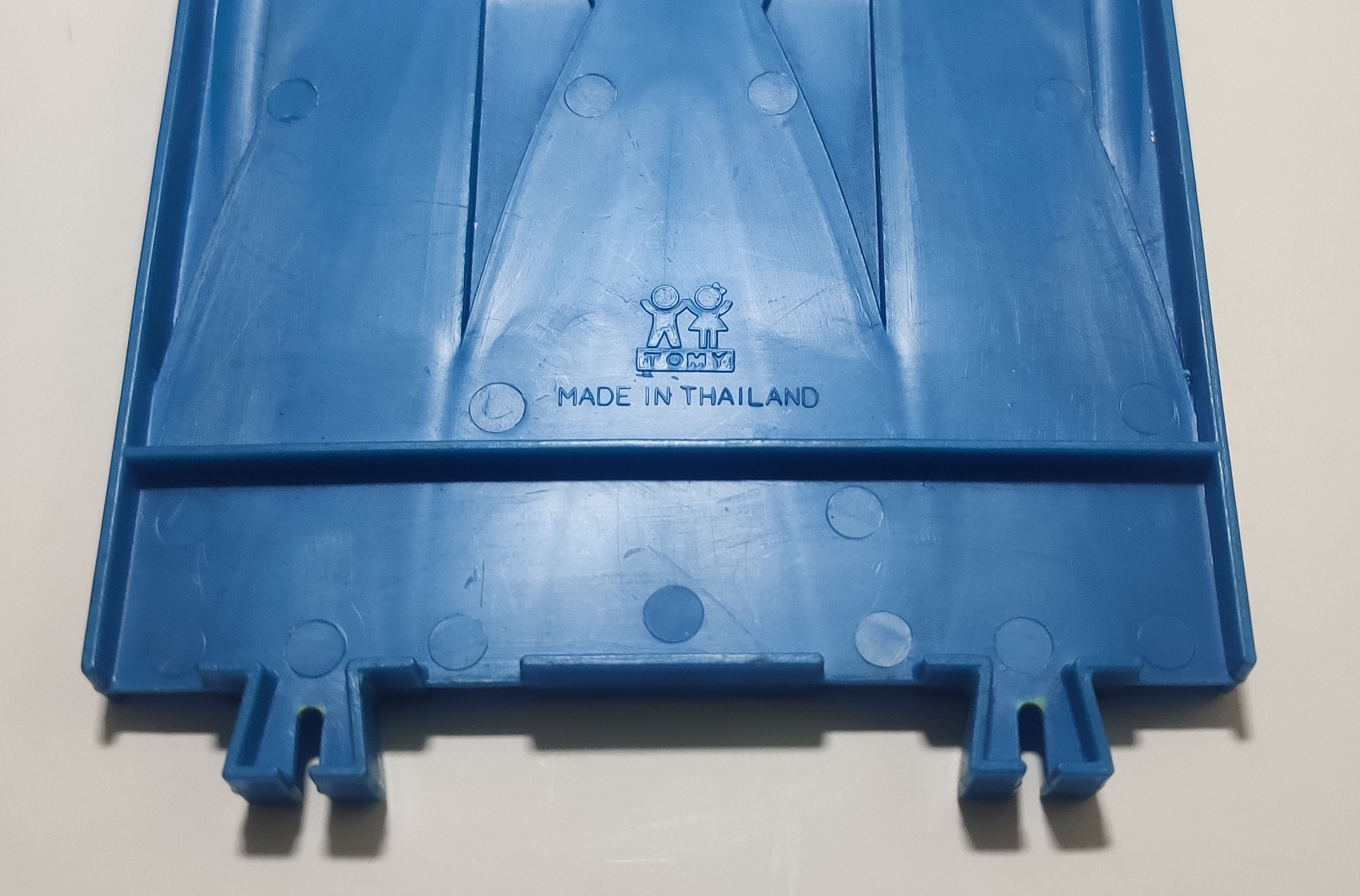
When production moved to Thailand in the early 90s the automatic type was updated to say made in Thailand instead of Japan. A late 90s pair of these rails was exported in a large Tomica World set.
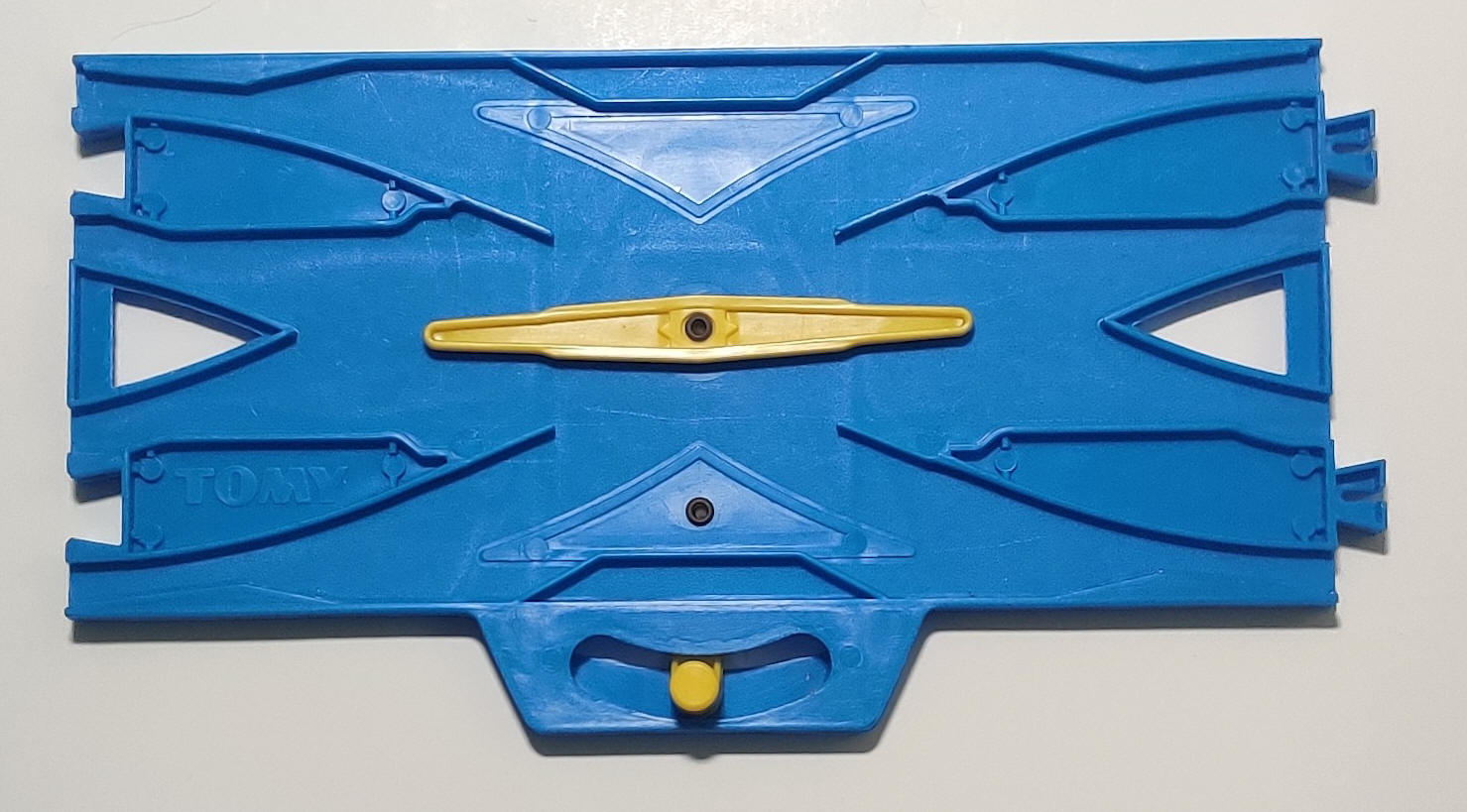
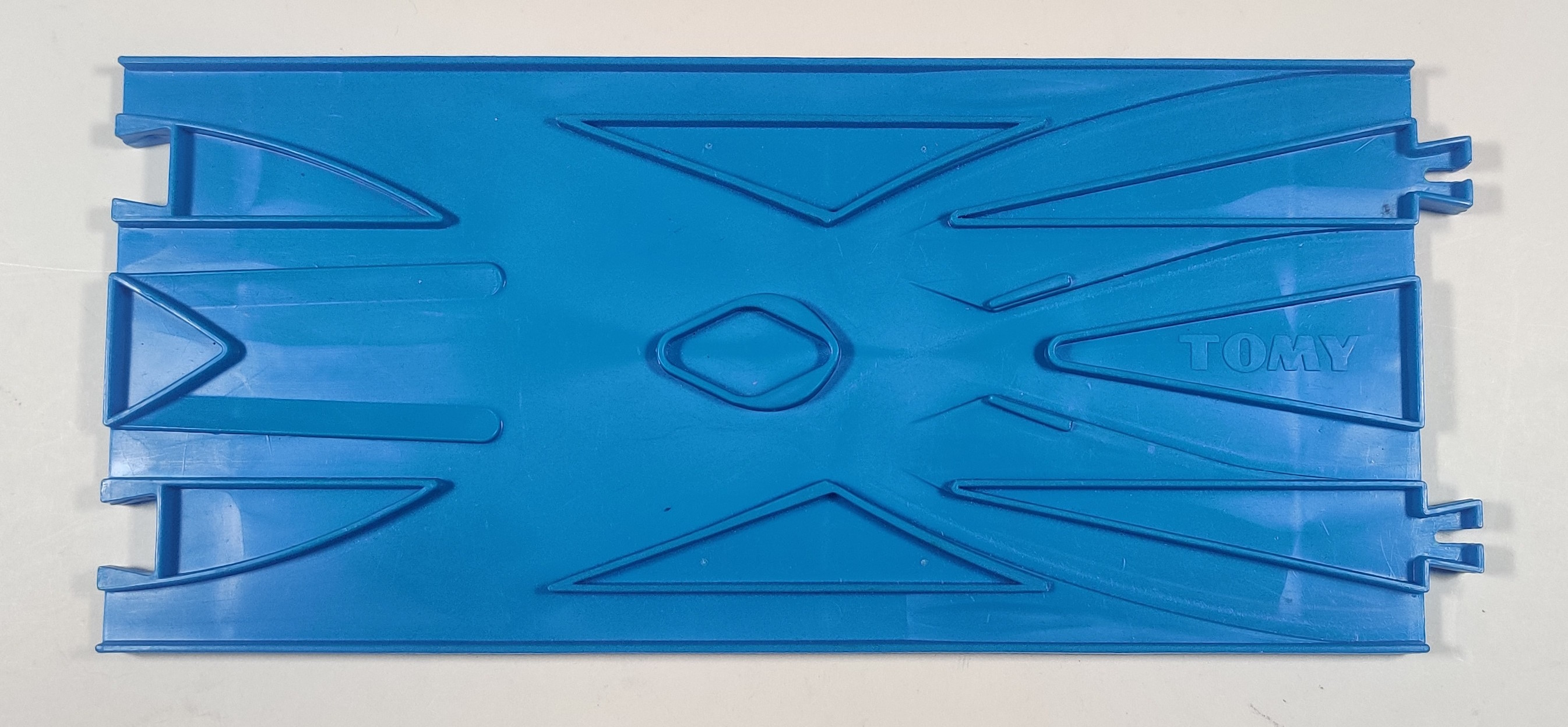
Circa 2001 the tooling for both pieces was updated with the new Tomy logo. The lever-type has a thickened directional changer and additional guidance in the middle of the outside rails to help guide trains heading across the switch. This can cause a train heading straight across it to "bump" over to the side slightly, and also makes then travel across the odd triangular section which has no roughtop molding. This version was used in some exported Thomas Motor Road and Rail sets.
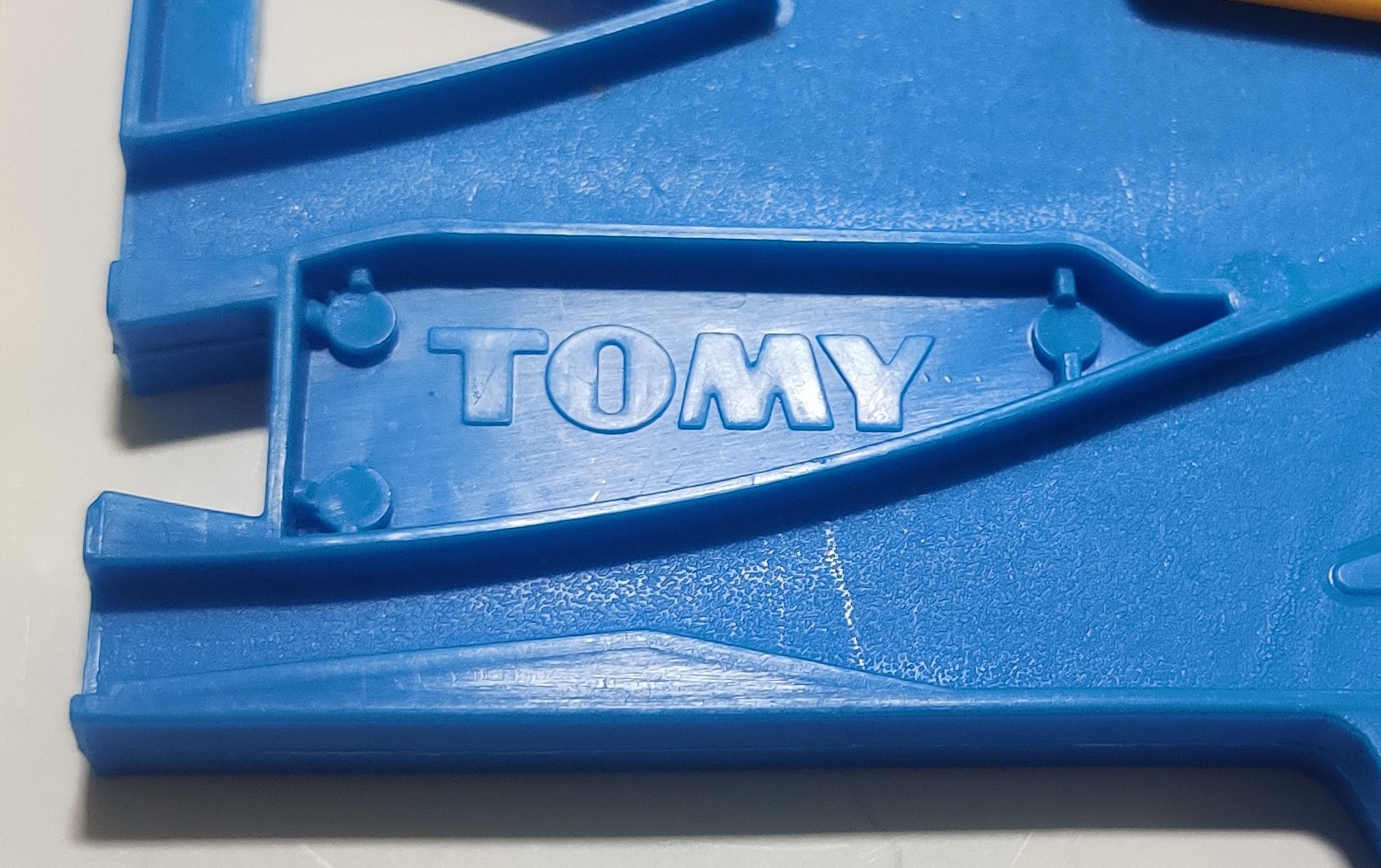
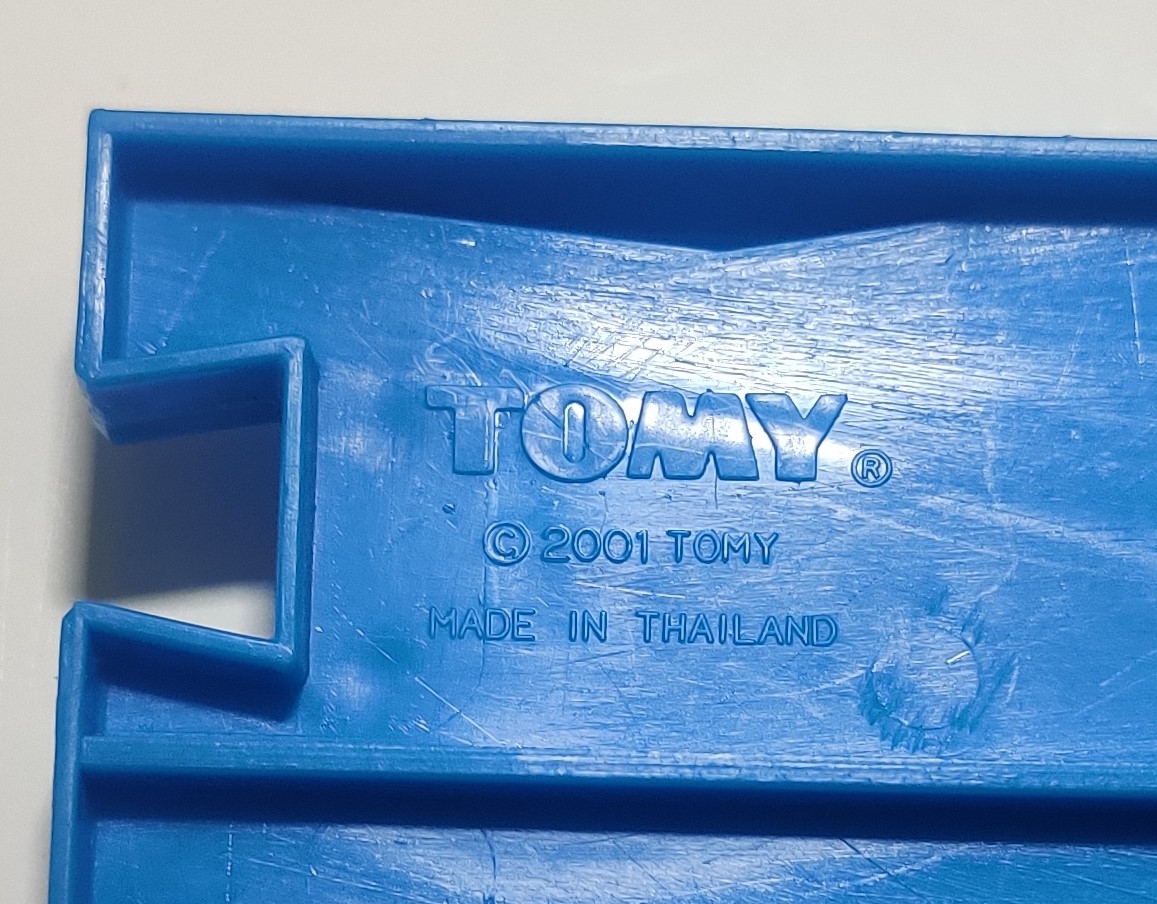
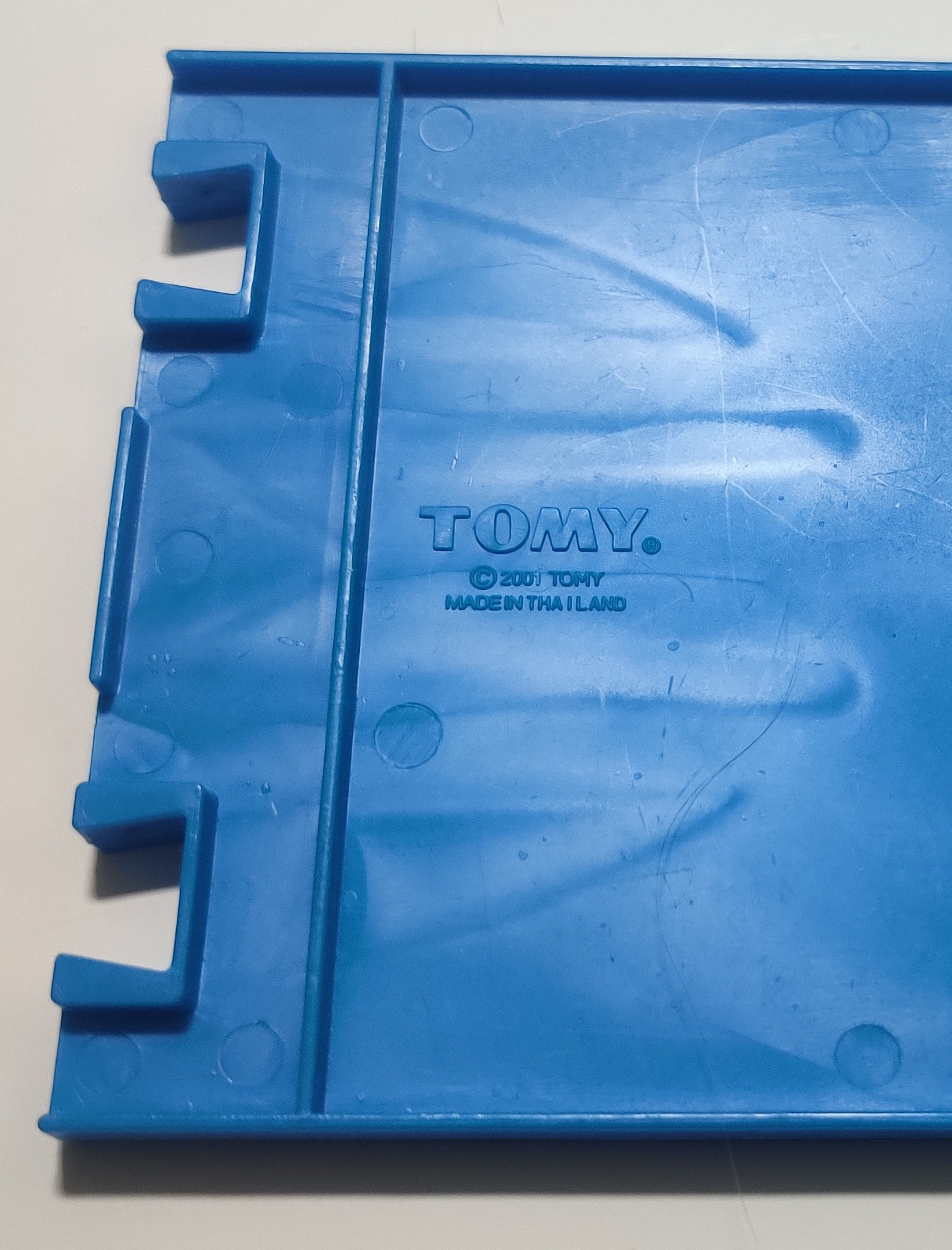
The R-15 Double Track Point Rail went out of print in 2012. The automatic type point rail has occasionally been used in sets since including a Thomas track set and a late 2023 remote control E5 series Shinkansen set.
| <-- R-14 Crossing Point Rail | R-16 Automatic Point Rail --> |